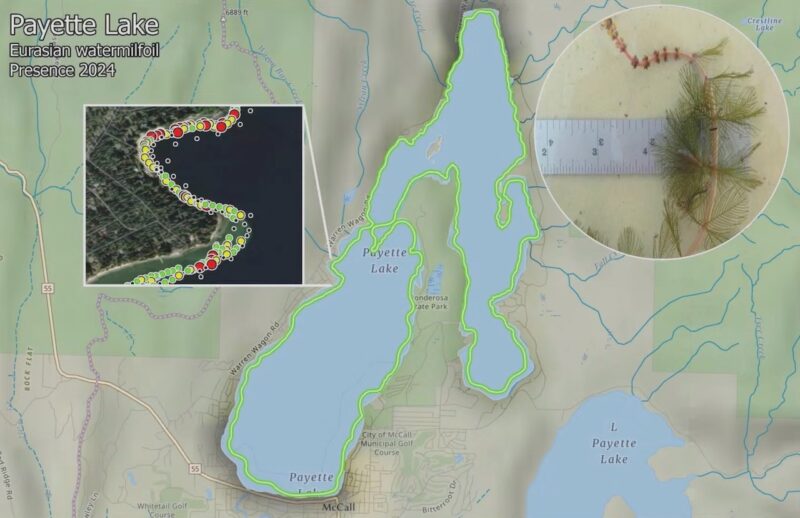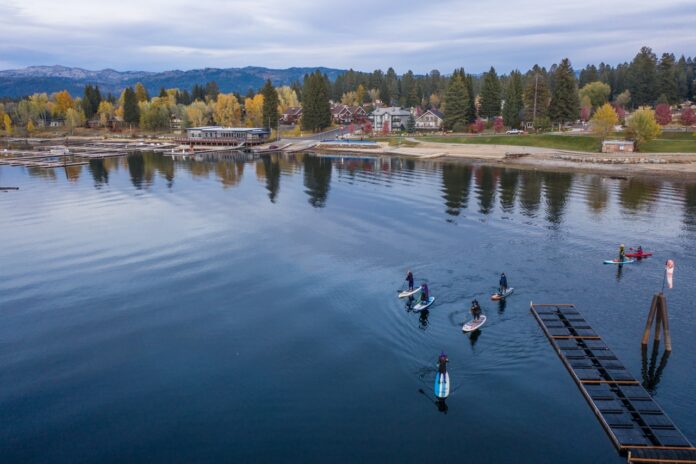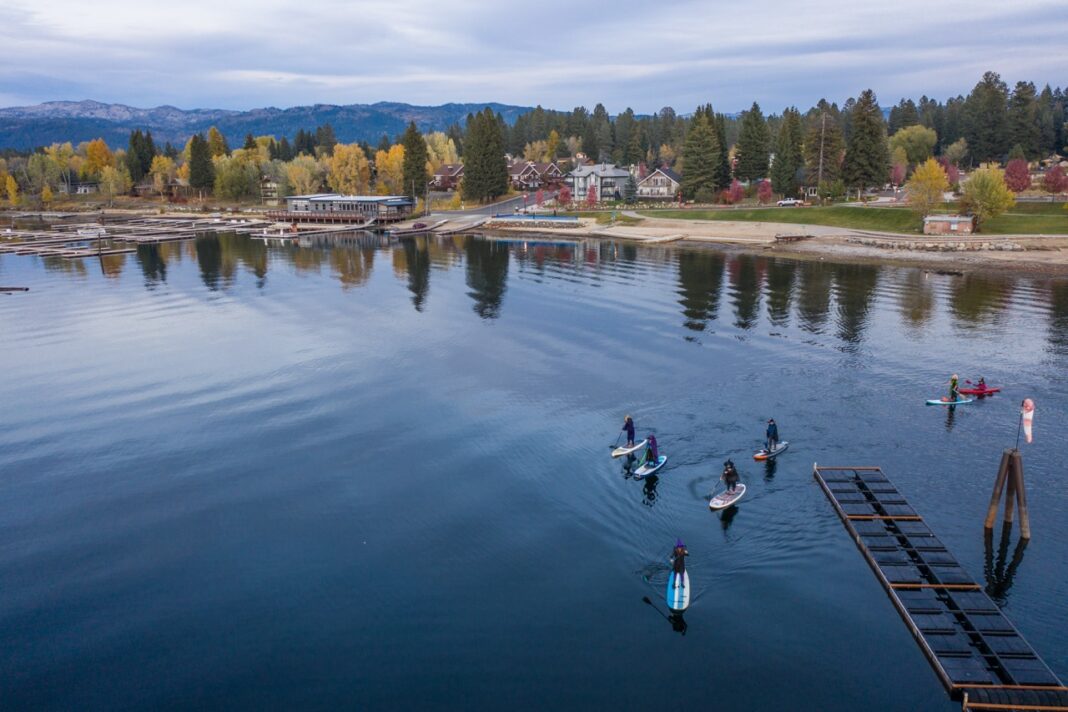For the first time, a chemical treatment could be used this summer to combat an invasive plant threatening to overtake Payette Lake, the McCall City Council was told Thursday night.
The Idaho State Department of Agriculture, which manages invasive plant species across the state, is planning to use herbicides in a test zone spanning about eight acres near North Beach, Chief Treatment Engineer Jeremey Varley said.
The treatment, which will be applied in mid- to late-July, follows surveys last summer that revealed more Eurasian water milfoil in Payette Lake than expected.
“We’ve been holding it together with the diving and removal that we’ve been doing as a county and as a state,” Varley told council members. “But we’ve reached the tipping point.”
The chemical treatment would be applied underwater to limit the herbicide from spreading in the lake beyond the test zone. Water monitoring will be completed before, during, and after the chemicals are used, Varley said.
Varley did not specify what herbicide would be used, but said it would not affect the city’s drinking water, which is pumped from Payette Lake near Legacy Beach and Davis Beach.
The herbicide is also not expected to affect recreation on North Beach or harm fish and other aquatic species.
Years-long process expected
If the test is successful, the herbicides would then be used elsewhere in the lake. Areas near boat ramps and marinas are typically the highest priority to reduce further spread, Varley said.
The chemical treatment would be combined with continued efforts by divers to remove the plant in what is expected to be a years-long process.
“Frankly, there is more milfoil in Payette Lake than our budget can take care of in a single year,” Varley said.
Varley estimated it would cost $3 million to eradicate the plant from the lake and said the annual budget for Eurasian milfoil removal statewide is $1 million.
Access at stake
If left unchecked, the plant would eventually inundate the lake’s shoreline with mats of the plant that could leave private docks, shorelines, and other places inaccessible by boat.
“We had certain bays in Hayden Lake and Lake Pend Oreille where emergency services couldn’t reach those homes or those areas just due to how much prop fouling that they would receive trying to get through there,” Varley said.
Excess Eurasian milfoil could also result in habitat loss for native fish species and trigger toxic algal blooms on the lake, Varley said.
“It really is an ecosystem crashing plant,” he said.
When did Eurasian milfoil get into Payette Lake?

Eurasian milfoil was discovered in Payette Lake in 1997 near the city’s boat ramp north of Legacy Park, according to a water quality report by the Idaho Department of Environmental Quality.
Without donors like you, this story would not exist.
Make a donation of any size here
“The occurrence of Eurasian Milfoil near the boat ramp suggests it was introduced to Payette Lake from a boat or boat trailer that had been used in a lake infested with the plant,” the report said.
Since then, the invasive plant has spread around the entire lake, forming what Varley described as a “bathtub ring” around the shoreline.
“It has gotten severely bad,” he said. “It’s usually between that three-foot to 24-foot (depth) range in the lake.”
Last summer, the agriculture department found the invasive plant to be more prevalent than expected after 15 divers swam the lake’s shoreline to survey densities.
That revelation led the state to the conclusion that efforts of the last 25 years to remove the plant from the lakebed by hand or using machines are no longer sufficient, Varley said.
“It’s definitely kind of broken that threshold,” he said. “We now have much more higher density populations.”
Herbicide use on other Idaho lakes
Although the chemical treatment would mark the first on Payette Lake, herbicides have been used in several other lakes around Idaho, including lakes that feed drinking water systems.
The herbicides have proven effective at reducing Eurasian milfoil, particularly on Lake Pend Oreille in Bonner County.
“We’ve gone from hundreds of acres of Eurasian water milfoil, down to last year only having 48 (acres),” Varley said.
Priest Lake, also in northern Idaho, is another success story. Last summer surveys only found two acres of Eurasian milfoil in the lake, he said.






